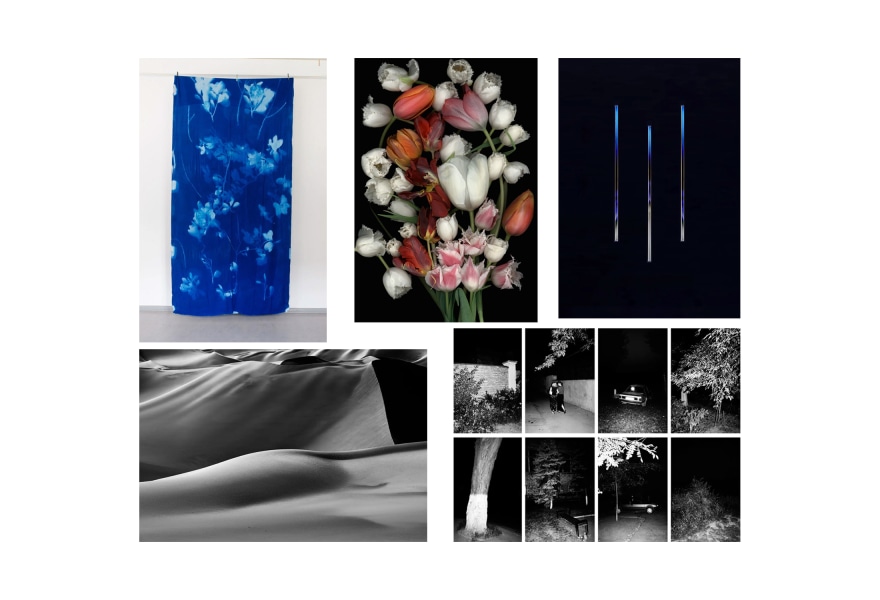19 may 2023, Pienk de Gaay Fortman
Five exciting photographers during Ballroom Project
The fifth edition of Ballroom Project kicks off during Antwerp Art Weekend. Although the presentations are not limited to one medium, Gallery Viewer selects five exciting photographers. The execution ranges from documentary photography by Tudor Bratu and Tahmineh Monzavi, to Eva-Fiore Kovacovsky's cyanotypes, Luzia Simons' scanograms to hypnotic installations by Thomas Devaux. All artists play - literally and figuratively - with the mirroring effect of photography. Thanks to curator Ilse Roosens, the works are presented in the best possible light.
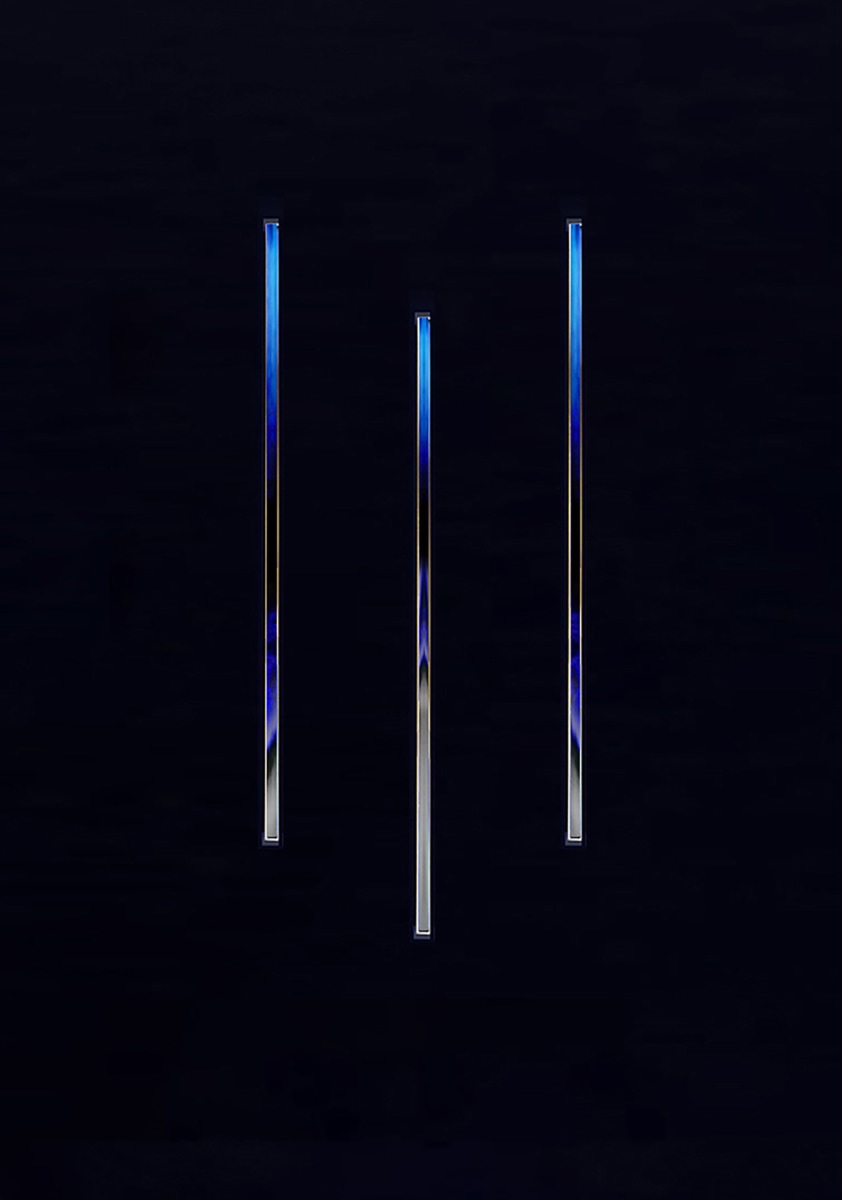
Thomas Devaux, Totem 4.04, 2023, La Patinoire Royale | Galerie Valérie Bach
Thomas Devaux (b. 1980, France) explores the boundaries of the medium of photography. In his work, Devaux explores themes of the sacred, profane and transcendence. Galerie Válerie Bach will present the installation Totem 4.04 (2023) during The Ballroom Project. The work consists of three thin, vertical objects made of dichroic glass. 'Dichroic' in Greek means two colors, so depending on the position of the glass and light, it changes color. Devaux: “Technically the dichroic glass is positioned in front of the photographs I make and then encased in a frame that I gild with gold leaf. The light from this glass is then also reflected on the gilding, which adds an almost solar aspect to these works.” Devaux's works invite the viewer to interact. Those who stand in front of them become amazed by the reflective effect of glass and the alternating color effects. The Dichroics absorb and hypnotize the viewer, creating a contemplative effect. His photographs are invested with a permanent tension between the profane and the sacred, between the exploitation of impulses and the awakening to meditation.
Represented by La Patinoire Royale | Galerie Valérie Bach
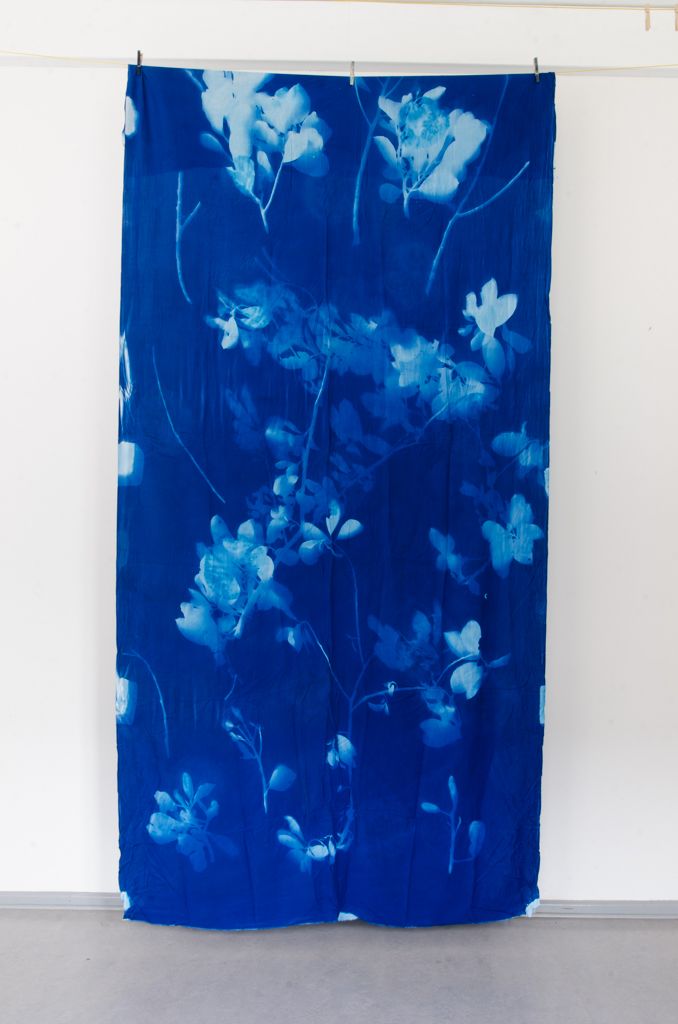
Eva-Fiore Kovacovsky, Jackotype, 2017, Bradwolff & Partners
In 1843, Anna Atkins first developed a book of seaweed photograms on cyanopaper. That these techniques remain relevant nearly 200 years after the event is proven by artist Eva-Fiore Kovacovsky (b. 1980, Switzerland). After thorough research at the New York Botanical Garden Library, she applies traditional photographic techniques in her contemporary artistic practice. At the Ballroom Project, Bradwollf & Partners is showing Kovacovsky's series Jackotype (2017), cyan blue canvases with prints of fruit, branches, seeds and leaves. As the title implies, Kovacovsky used a combination of jackfruit and cyanotype. Jackfruit is considered a plant-based alternative to staple crops and therefore can be a counterforce to climate change. Based on this fascination, the artist traveled to Sri Lanka, one of the countries in Southeast Asia where this fruit is found. In this natural environment, Kovacovsky arranges a variety of natural materials on light-sensitive canvases. The artist then experiments with organic chemicals to achieve the desired color effect. Through her playful interventions and the workings of nature, poetic, surprising works are created that do not involve a camera. Her art testifies to the magic of photosynthesis.
Represented by Bradwolff & Partners

Tudor Bratu, Night Study #1, 2020, Joey Ramone
For Night Study (2020), a series of 48 photographs, Tudor Bratu (b. 1977, Romania) explores the nighttime streets of Chisinau. Due to economic pressures and severe power shortages, there are no lampposts lighting the streets. There are rarely people on the streets. In this context, Bratu began photographing, the results of which only became visible once he developed the negatives at home. Each photograph depicts a split second of the "illumination of darkness" - a single moment, which cannot be remembered or relived. From this perspective, it is not a place but rather time itself that is photographed. Just as a telescope reveals the dark sky, Bratu records the night of Chisinau with his camera. That a photograph is a snapshot does not diminish the documentary power of the medium. Bratu: “Today the so-called post-truth condition threatens a proper understanding or evaluation of documentary facts and in doing that, threatens the very foundations of human history and future development. Our lives and daily existences are not, as so often proposed, a matter of passively enduring a post-truth world. Instead, I believe the facts of today present us with an accurate reflection of who we are and what we have done and are doing.” In addition to being an artist, Bratu has been managing director of the Bucharest AiR residency program in Romania since 2010.
Represented by Joey Ramone
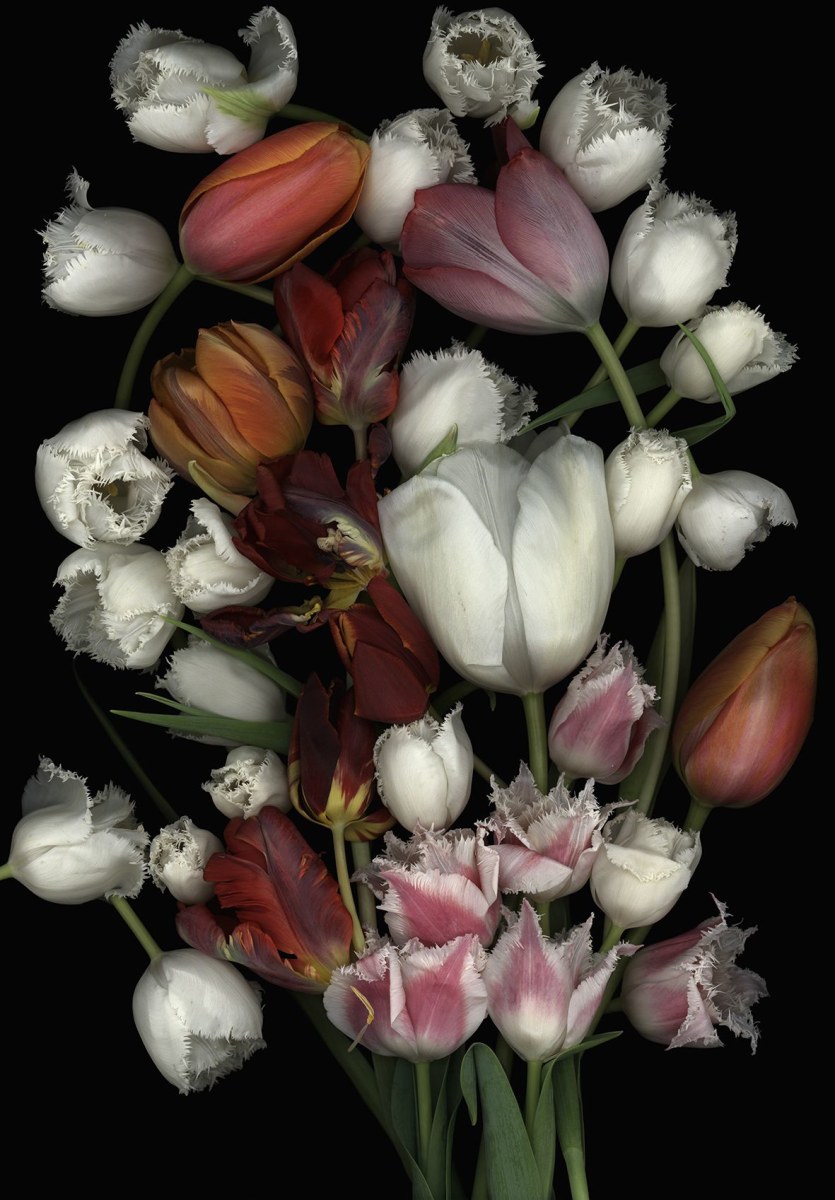
Luzia Simons, Stockage 83, 2020, La Patinoire Royale | Galerie Valérie Bach
The career of Luzia Simons (b. 1953, Brazil) spans nearly forty years. For Ballroom Project she is showing recent work from her project Stockage. In this series, Simons uses scanogram, a technique in which she places flowers on a glass plate and then develops them with a special scanner. The resulting floral still lifes are given extra sharp colors by printing them on Japanese Mitsumata paper. In doing so, the artist enhances the optical illusion, or "trompe-l'oeil effect," of the Renaissance. Simons' works refer to vanitas art in which all kinds of cultural codes are hidden. For example, the tulips tell the story of the "tulipmania" in 17th-century Holland. The tulip symbolizes mobility, globalization and intercultural identity. In addition to these cultural-historical references, the viewer can lose himself in her imaginative compositions. The flowers seem to interact vividly with each other: one moment they are in a botanical battle and the next in harmony. Simon's art reads like a floral dream with layered cultural-historical references.
Vertegenwoordigd door La Patinoire Royale | Galerie Valérie Bach
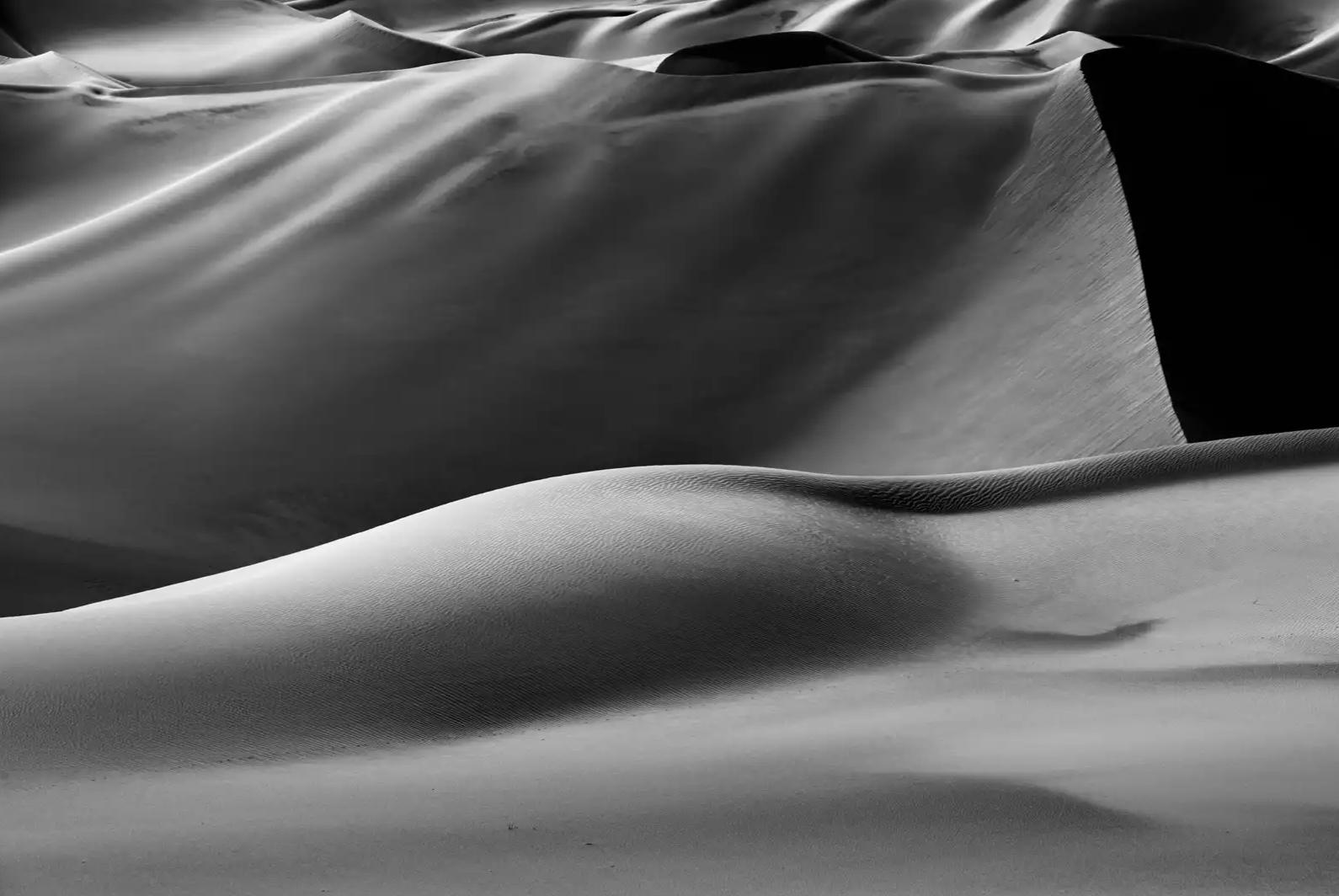
Tahmineh Monzavi, Lut, 2020-2022, Gallery Felix Frachon
Iranian independent documentary photographer Tahmineh Monzavi (b. 1988, Iran) attended the Bachelor of Photography at Azad Art and Architecture University from 2006-2010. Since then, the artist dared to deviate from the artistic standard; instead of capturing still lifes and natural landscapes as was expected of her, she explored the streets of Tehran with her camera. This social focus led to series The Brides of Mokhbar al-Dowleh (2012), in which Monzavi photographs a bridal store with masculine designers for feminine designs. The building with mannequins in wedding dresses are "like ghosts staring at people from high on the bridge," as her supervisor and photographer Bahman Jalali describes. During the same period, Tahmineh photographs women in the homeless shelter Grape Garden Alley. Through these portraits, she captures the essence of women dealing with violence, drug addiction and poverty. The position of women in Iran remains a common thread in her work. In The Zangi Women (2020-2022), she follows the African-Iranian community "Zangis," who were trafficked by Arab slave traders to provinces near the Persian Gulf until the nineteenth century. In Lut (2021-2022) Tahmineh ventures into the landscape, for in this too she believes female symbols reside. In the desolate desert of southeast Iran, the eye wanders to the sand dunes, Kaluts (sandy mountains) and vast salty lands. In black-and-white photography, Tahmineh shows the sublime beauty of this UNESCO World Heritage-listed landscape.
Represented by Gallery Felix Frachon
